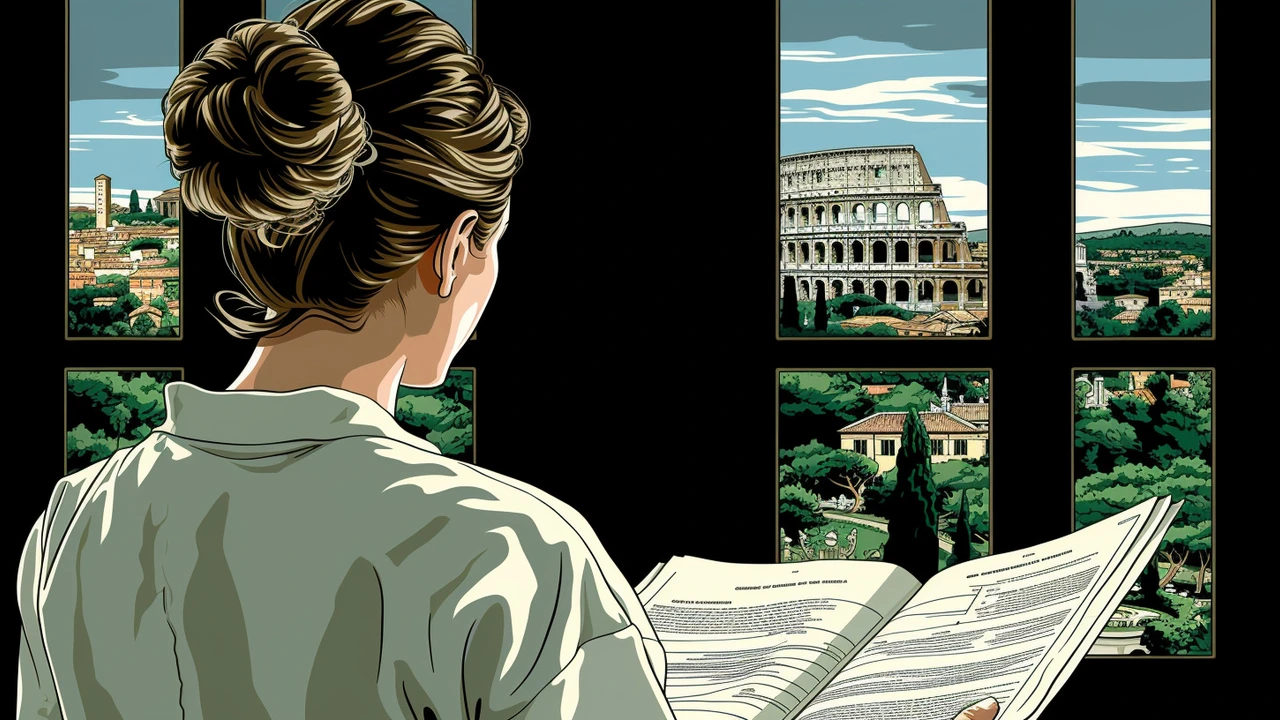Ancient Roman Architecture: Engineering, Forms, and Legacy
Ancient Roman architecture shaped cities, tools, and how we build today. You can still see Roman ideas in bridges, government buildings, and homes. This page collects practical facts to help you recognize Roman design and understand why it lasted so long.
Why Roman buildings still matter
Romans solved big problems with simple ideas. They used concrete that set underwater, and that let them make vaults and domes at sizes people had not seen. Aqueducts moved water across valleys with steady slopes, not fancy pumps. Roads used layers of stone so armies and trade could move fast. Those fixes made cities healthier, richer, and easier to run. Architects later borrowed Roman methods because they worked.
Key features to spot
Look for arches, vaults, and domes. Arches spread weight to the sides so walls could have big openings. Vaults build long covered halls. Domes create large interior spaces without many supports. Concrete appears as thick, often brick-faced walls. You will also notice classical orders—Doric, Ionic, Corinthian—on temples and civic buildings. Finally, check for engineering elements like raised platforms, drainage channels, and precise road lines.
If you visit a Roman site, try this quick checklist: find the biggest arch, count the layers in the road, and spot water channels or remains of pipes. Museums often show original building fragments and tools. Seeing a fragment of Roman concrete gives a clear sense of how different their method was compared with ashlar stone work.
Roman style mixes function with display. Public baths, basilicas, and amphitheaters served routine needs and civic pride at the same time. The Colosseum combined entry tunnels, seating tiers, and retractable covers to handle crowds and weather. Baths used hot and cold rooms to control comfort and hygiene. Those designs influenced how public buildings were made for centuries.
Restoration today faces clear issues. Roman concrete can last a long time, but mortar and facing stones wear. Preserving mosaics and frescoes needs careful humidity control. Modern conservators use noninvasive scanning to map hidden voids before repairs. If you care about heritage, support selective conservation that keeps structures usable while keeping original materials intact.
Want to learn more here? Check articles that compare Roman ideas with Byzantine domes, Renaissance reuse of classical details, and modern urban planning influenced by Roman grids. You can also find travel tips for top Roman sites and practical ways to spot Roman tech in everyday cities. Ancient Roman architecture is not just history. It’s a toolkit for solving building problems and shaping public life.
Try a hands-on exercise when you visit: trace mortar joints, note the curve radius of domes, and photograph any reused columns. Compare measurements with museum labels or guidebooks to see how builders balanced size and weight. If you study online, look for diagrams of Roman concrete mixes and vault cross-sections. Join local history walks or online forums to ask specific questions about nearby ruins. Small observations build real knowledge, and they make old stones feel like a clear lesson about problem solving and public life.

The Eternal Charm of Ancient Roman Architecture
Wowza, isn't Ancient Roman Architecture just a sight for sore eyes! It's got that irresistible old-world charm that just keeps you coming back for more. It's like a classic black-and-white movie, there's something about those Colosseums, Aqueducts, and Temples that even the flashy modern structures can't match. They're standing tall, whispering tales from the past, and I tell you, they've aged beautifully, like a fine wine. It's the ultimate blast from the past, but with no time machine required - just a ticket to Italy and a bit of imagination!
Read more
The Transformation of Ancient Roman Architecture
Oh, honey, let me tell you about the jaw-dropping transformation of Ancient Roman architecture, it's like a reality TV makeover show, but for buildings! Once upon a time, Romans were all about Greek-style architecture - I mean, who can resist those columned temples and marble statues? But, hold your horses! Romans decided to shake things up and introduced concrete into the mix. Voila! They started having these grand, innovative structures like amphitheaters and aqueducts. It's like when you add a pinch of spice to your grandma's classic recipe and the whole family goes "wow!". So, my lovelies, from Greek-inspired to concrete wonders, Roman architecture had one heck of a glow-up.
Read more